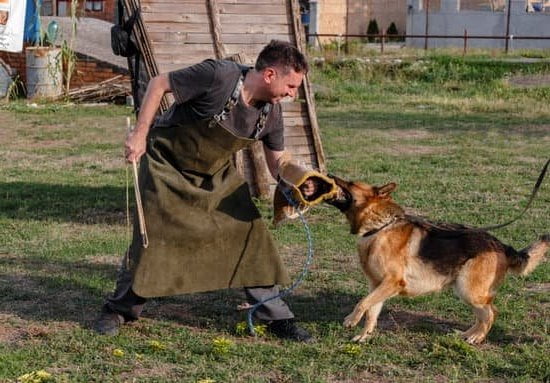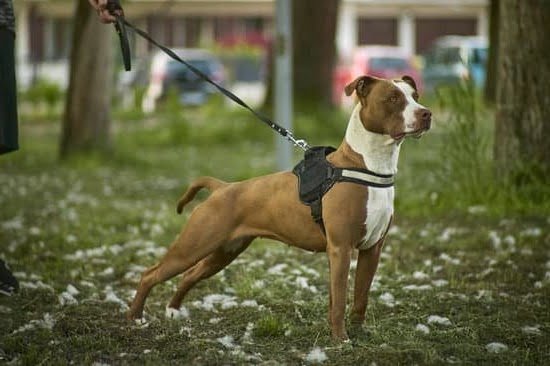Can Any Dog Be Trained As A Service Dog
The answer to this question is both yes and no. The reason for this is that there is no one specific breed or type of dog that is automatically suited to become a service dog. Any breed or type of dog can be trained as a service dog if they have the desired temperament and personality traits that are needed for the job. However, not all dogs are suited to become service dogs and not all dogs that are trained as service dogs will be successful in the role.
The temperament and personality traits that are most desirable in a service dog are intelligence, obedience, calmness, and patience. Dogs that are high-energy and excitable may not be well suited for the role of service dog, as they may not be able to remain calm in stressful or challenging situations. Dogs that are easily distracted or that have a tendency to bark or be hyperactive may also not be good candidates for service dog training.
On the other hand, dogs that are intelligent and have a strong desire to please their owners are often good candidates for service dog training. Dogs that are obedient and have a good temperament are more likely to be successful in the role of service dog. It is important that service dogs be able to remain calm and patient in difficult situations, as they may be required to work with people who are disabled or who have a mental illness.
So, while any dog can potentially be trained as a service dog, not all dogs are suited for the role. It is important to consider a dog’s temperament and personality traits before deciding if they are a good candidate for service dog training.
How Old Can You Train A Service Dog
The answer to this question is not a simple one, as there are a variety of factors to consider when determining an appropriate age for training a service dog. Generally speaking, service dogs can be trained at any age, but the process of training and working with a service dog is most successful when started early in the dog’s life.
One of the most important factors to consider when training a service dog is the dog’s temperament and personality. Not all dogs are suited for service dog work, and those that are not temperamentally suited for the job may become frustrated or stressed, leading to behavior problems. A dog that is easily excitable or overly-active may not be the best candidate for service work, as it may be difficult to keep the dog focused and working. Conversely, a dog that is too shy or fearful may not be able to handle the public interactions that are often a part of service work.
Another important factor to consider is the dog’s physical abilities. A young dog may be more physically capable of performing the tasks required of a service dog than an older dog, although there are many older dogs that are perfectly capable of performing the necessary tasks. It is important to remember that a service dog’s job is to help its handler, and if the dog is unable to perform the necessary tasks, it is not going to be effective in helping its handler.
Ultimately, the decision of when to start training a service dog is up to the dog’s handler. If the handler feels that the dog is physically and temperamentally capable of performing the tasks required of a service dog, then training can begin at any age. However, it is important to keep in mind that training a service dog is a long-term commitment, and the process should not be rushed in order to get the dog “trained” as quickly as possible. The goal should be to create a well-trained and well-behaved service dog that is able to provide assistance to its handler for many years to come.
Certification For Service Dog Training
The process of service dog training is rigorous and demanding, but it is also necessary in order to ensure that these animals are able to provide the highest level of assistance to their disabled handlers. The certification process is designed to test the dog’s obedience, temperament and ability to work in a public setting, and only those animals that pass this rigorous evaluation are allowed to work as service dogs.
The certification process begins with the dog’s basic obedience training. Dogs that are being considered for service dog work must be able to obey basic commands such as sit, stay, come and down, and they must also be able to work calmly and quietly in a public setting. In addition to basic obedience training, service dogs must also be taught how to perform specific tasks that will be helpful to their disabled handlers. This may include tasks such as opening doors, retrieving dropped items, or providing stability for a handler who is using a wheelchair.
The temperament of a service dog is also extremely important, as these animals must be able to work calmly and quietly in a variety of different settings. Dogs that are excitable or aggressive will not be successful as service dogs, and they may even pose a danger to their handlers and to the general public.
In order to ensure that all service dogs are able to safely and effectively interact with the public, they must be certified by an organization such as the National Service Animal Registry. This certification is valid for two years, and it must be renewed in order to keep the dog’s status as a service animal.
The National Service Animal Registry is a nonprofit organization that was founded in 1998. It is dedicated to providing certification and identification services for service dogs, guide dogs, and hearing dogs. The National Service Animal Registry is the only organization that is recognized by the United States Department of Justice as a national certifying body for service animals.
How To Train A Service Dog On Your Own
Service dogs can be a huge help to people with disabilities, but many people don’t know how to train a service dog on their own. If you’re looking to train your own service dog, there are a few things you need to know.
The first step in training a service dog is to find a good trainer. There are many good trainers out there, but it’s important to find one that specializes in service dogs. The trainer should be able to help you create a training program that meets your specific needs.
The training program should be based on positive reinforcement. This means rewarding your dog for good behavior, rather than punishing him for bad behavior. Positive reinforcement is the most effective way to train a service dog.
Your dog will need to be obedience trained. He should be able to sit, stay, come, and heel on command. He should also be able to follow basic commands in a noisy or chaotic environment.
Your dog will also need to be socialized. He should be comfortable interacting with people of all ages and backgrounds. He should also be comfortable with loud noises and chaotic environments.
It’s also important to train your dog to perform specific tasks. He may be trained to open doors, retrieve items, or help you get up from the floor. The tasks you choose should depend on your specific needs.
It takes a lot of time and effort to train a service dog on your own, but it’s well worth it. A well-trained service dog can make a huge difference in your life.
Service Dog Training Guidelines
A service dog is a dog that is trained to perform tasks for a person with a disability. These tasks can include helping a person with blindness or low vision, guiding a person who is deaf or hard of hearing, alerting a person with diabetes to low blood sugar, helping a person with a seizure disorder, or providing support for someone with Post Traumatic Stress Disorder (PTSD).
Service dogs can be of any breed or size, but they must be well-trained and able to work calmly and effectively in public. They must also be housebroken and able to stay quietly in their handler’s home or office.
If you are considering getting a service dog, there are a few things you should know. First, it is important to find a reputable service dog training program. There are many programs out there, but not all of them are reputable or have the best interest of the dog or the handler at heart.
When looking for a program, be sure to ask about their training methods. Are they using positive reinforcement only, or do they use aversive methods such as shock collars or choke chains A reputable program will only use positive reinforcement methods, as these are proven to be the most effective and humane way to train a service dog.
It is also important to find a program that is experienced in training the specific type of service dog you need. For example, if you need a guide dog, be sure to find a program that has experience in training guide dogs.
The cost of a service dog can vary depending on the program you choose. However, most programs charge between $10,000 and $25,000 for a fully trained service dog. This cost may be partially or fully covered by insurance, depending on your individual situation.
Once you have a service dog, it is important to keep up with their training. Service dogs must be constantly retrained in order to keep up their skills. This can be done through weekly obedience classes, or through online programs such as Doggy Dan’s The Online Dog Trainer.
If you have a service dog, be sure to always use a leash and harness when taking them out in public. This is for the safety of both the dog and the public. Service dogs should also be wearing their identification vest whenever they are out and about.
If you have any questions about service dogs or service dog training, be sure to contact your local service dog training program. They will be more than happy to answer any of your questions.

Welcome to the blog! I am a professional dog trainer and have been working with dogs for many years. In this blog, I will be discussing various topics related to dog training, including tips, tricks, and advice. I hope you find this information helpful and informative. Thanks for reading!





